Workflow Features#
In the previous section, we pointed out that flowcharts promote reusability and reproducibility. Flowcharts offer two other nontrivial but powerful features: replicability and generalizability. In the present discussion, we will also include reproducibility due to its importance and close relation to the two aforementioned concepts.
Before proceeding with the details, let us formally define reproducibility, replicability and generalizability following the definitions presented in the National Academies of Sciences report Reproducibility and Replicability in Science.
- Reproducibility
is obtaining consistent results using the same input data, computational steps, methods, and code, and conditions of analysis. This definition is synonymous with computational reproducibility.
- Replicability
is obtaining consistent results across studies aimed at answering the same scientific question, each of which has obtained its own data. Two studies may be considered to have replicated if they obtain consistent results given the level of uncertainty inherent in the system under study.
- Generalizability
refers to the extent that results of a study apply in other contexts or populations that differ from the original one.
Reproducibility#
Flowcharts are reproducible objects which replicate an identical set of steps if executed twice on the same or two separate machines. Provided that the steps themselves are deterministic, the entire workflow will yield identical results. On parallel executions using multiple processors or adopting different versions, the results will likely be similar within an estimated level of certainty but not identical.
A variety of computational tasks such as training neural networks, molecular dynamics simulations and Monte Carlo methods, depend on random numbers for (pre-)initialization of data. These types of simulations will differ in details unless the seeding random number is fixed. In this case, the physical results of duplicate runs should be identical in the statistical sense despite having different trajectories. The developers of SEAMM plug-ins are encouraged to ensure the reproducibility of the results by printing the adopted seed values in the output and allowing users to modify them, when necessary.
Replicability#
SEAMM relies on plug-ins for the realization of replicability without providing any guarantees. Plug-ins simplify and clarify the inputs to the underlying simulation engines. Furthermore, plug-ins guide the relevance of available key parameters adopted in each simulation while pre-initializing them to reasonable default values.
The usage of flowcharts published by experts in the public domains will promote replicability through reproducibility and generalizability. For example, if a professional scientist publishes a flowchart that calculates the viscosity of a fluid using LAMMPS and another expert publishes a flowchart to compute the same property using GROMACS, it is very likely that they will get comparable results. Any researcher can then import one of the flowcharts in SEAMM and adopt it to study the properties of a different fluid and get high quality results. You might want to share your flowchart with a collaborator to be able to replicate your results independently.
Generalizability#
Generalizability is one of the superpowers of SEAMM that stems from the existence of flowcharts and plug-ins. For instance, a flowchart that calculates a specific properties of a group of small organic molecules, can also be used to study the a distinct group of organic molecules of medium to large sizes. That being said, the applicability of the flowcharts cannot be extended too much towards performing calculations far outside their original scope. For example, one cannot use flowcharts that are built to calculate the elastic properties of solids to fluids or isolated molecules. If the force-field does not have the parameters associated to the elements or functional groups in the target molecule(s) or a quantum chemistry code does not have basis sets for a particular element, the flowchart will not be functional.

